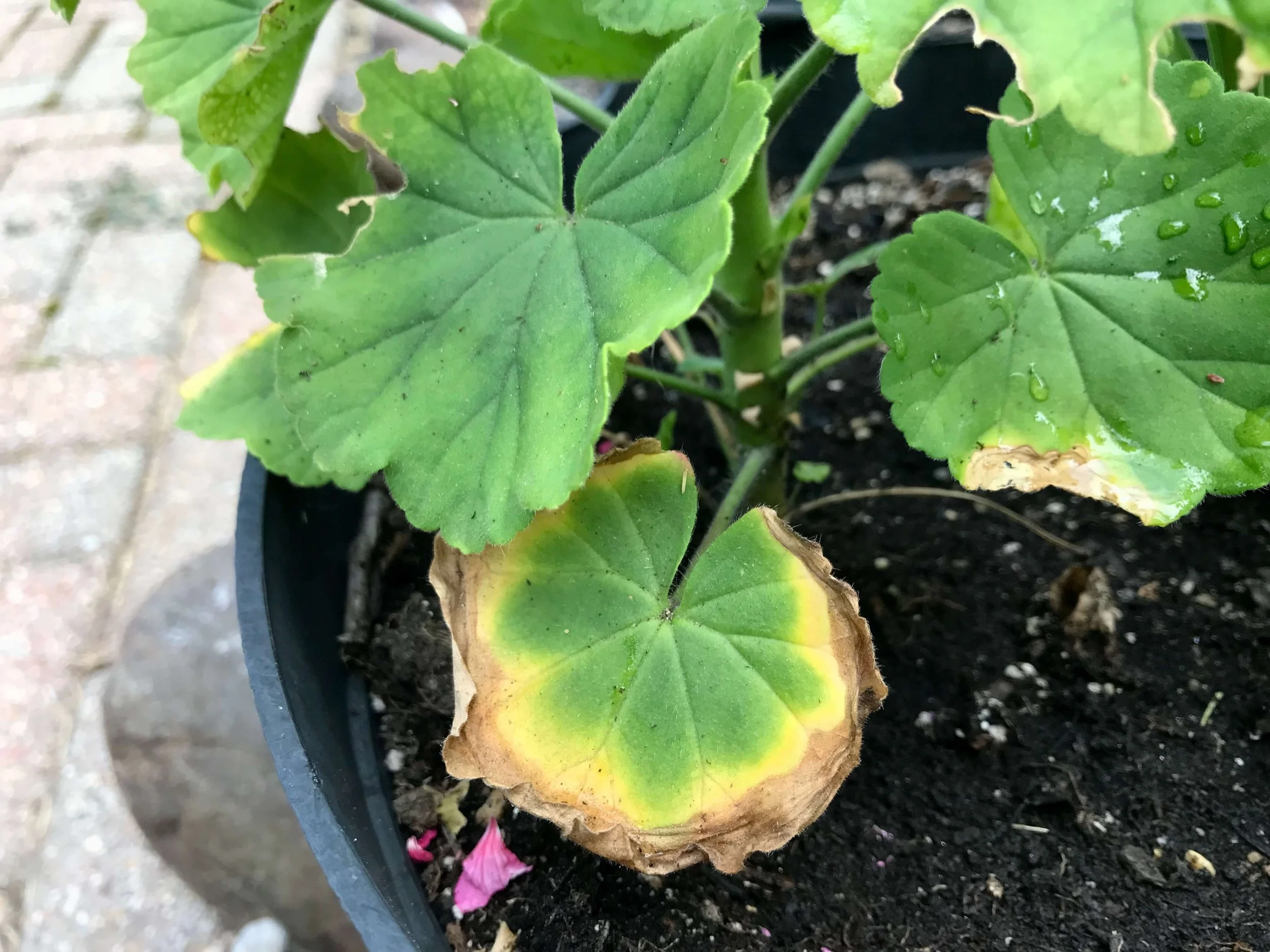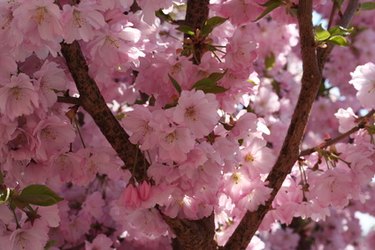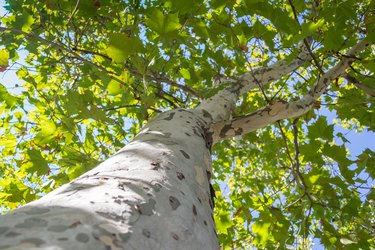Native to Mexico as well as Central and South America, avocado trees (Persea americana) are tropical broadleaf evergreens that are hardy in U.S. Department of Agriculture plant hardiness zones 10 to 12. The leaves of a healthy avocado tree are unmistakably green. Avocado tree leaves turning yellow, a condition known as chlorosis, is an indication that the tree is stressed. It is important to address the cause of chlorosis, which can diminish fruit production.
If you’ve noticed the leaves on your avocado plant turning from lush green to sickly yellow, don’t panic! Yellowing leaves are a common issue avocado tree owners face, but the causes are often easy to diagnose and treat when armed with the right information. Read on to learn why avocado leaves turn yellow and how to nurse your plant back to vibrant health.
Overwatering
The most frequent culprit behind yellowing avocado leaves is overwatering. Avocados thrive in well-draining soil and can’t tolerate wet feet. When soil remains soggy, the roots are deprived of oxygen. This leads to root rot, which blocks the roots from absorbing nutrients and water.
To avoid overwatering, wait until the top few inches of soil are dry before watering. Test with your finger or use a moisture meter. When you do irrigate water slowly and deeply until it drains from the pot’s bottom. Discard any water in the saucer so the roots don’t sit in it.
If you suspect overwatering, allow the soil to dry out completely before resuming a cautious watering routine. Trim off any severely damaged roots and repot in fresh, dry soil if necessary.
Underwatering
While overwatering is more common, letting your avocado dry out too much can also cause yellowing leaves. Wilt and leaf drop are signs you need to increase watering frequency. Avocados prefer consistently moist (but not soggy) soil.
Use your finger to check soil moisture before watering. If the top few inches are dry, it’s time to irrigate thoroughly until water flows from the drainage holes. Aim for about 1-2 inches of water each week.
You may need to water more frequently in hot, dry weather Add mulch to help retain soil moisture between waterings
Nutrient Deficiencies
Lack of key nutrients like nitrogen, iron, potassium, and zinc can starve avocado leaves of the building blocks they need to stay green and healthy. Each deficiency manifests slightly differently:
- Nitrogen deficiency appears first on older leaves, starting at the tips which turn yellow before progressing to the base. Growth is stunted.
- Iron deficiency targets young leaves which develop yellow patches between veins. Leaves are small.
- Potassium deficiency starts as yellow leaf tips and margins which spread inward. Leaf curl and brown spots occur.
- Zinc deficiency begins as yellowing at the leaf base and causes stunted growth.
Confirm deficiencies with a soil test, then amend the soil accordingly. Nitrogen-rich compost iron chelates potassium sulfate, and zinc sulfate are good choices. A balanced organic fertilizer applied regularly prevents many nutrient issues.
Diseases and Pests
Fungal infections, bacteria, and pesky insects can all take a toll on avocado foliage. Common diseases include root rot, anthracnose, and sunblotch. Insect infestations may involve mites, thrips, or scale.
Examine leaves closely for signs like sticky residue, webbing, or tiny bugs. Look for cankers on stems and bark. These clues can help identify the specific pest or disease. Promptly remove and discard affected plant parts. Fungicides, insecticidal soap, neem oil, or horticultural oils can treat minor cases.
Improve airflow and drainage to make conditions less hospitable for diseases. Maintain vigor through proper care and nutrition. Catch problems early before they spread.
Environmental Stress
Avocados thrive in warm environments with temperatures between 60-85°F. Exposure to extreme cold or heat can shock the plant, causing yellowed, dry foliage. Insufficient light also leaves leaves looking pale and limp.
Choose the right planting site to minimize temperature swings. Move container plants to sheltered spots as needed. Prune to open the canopy if lower leaves seem shaded.
Strong winds and intense sunlight can also scorch and dry leaves. Filter harsh light and provide a windbreak for protection.
Age or Seasonal Changes
As leaves get old, it’s natural for them to turn yellow and drop off. This process allows new growth to emerge. As long as it’s only a few old leaves, it’s nothing to worry about. Cleanly prune any unsightly ones.
When spring rolls around, avocados commonly shed some older leaves to make way for new growth. Unless your tree is defoliating dramatically, let this seasonal yellowing run its course.
Tips for Prevention
- Choose a site with fertile, well-draining soil and temperatures between 60-85°F
- Water thoroughly only when the top few inches of soil are dry
- Use a mulch layer to conserve moisture
- Fertilize regularly with a balanced organic formula
- Prune for open airflow and light penetration
- Inspect frequently and treat pests/diseases immediately
- Avoid overwatering by checking soil moisture before irrigation
- Repot in fresh soil if roots are compromised by overwatering
- Shelter from harsh sun, wind, and temperature extremes
With proper care tailored to their preferences, avocado trees reward growers with vigorous health and abundant fruit. Keep their soil, sun, and hydration needs covered, and those beloved green leaves will continue brightening up your garden.

Avocado Tree Leaves Turning Yellow
Video of the Day
Photosynthesis, the process by which plants convert sunlight into sugars they can use as energy, takes place in the leaves. Fruit trees, such as avocado trees, use that energy to produce fruits. Healthy foliage is therefore key to a healthy avocado crop.



Video of the Day
On a healthy avocado tree, the leaves are glossy, dark green and 4 to 8 inches in length. The leaves of an avocado tree will start to turn yellow as a result of a decline in chlorophyll, the substance that enables the leaves to perform photosynthesis. Leaf drop is also a major problem for avocado trees since robust, well-distributed foliage helps prevent the sun from damaging the trees prized fruit.
Yellow avocado leaves are usually a sign of nutrient deficiency. The location of the yellowing on the leaves offers clues as to which nutrient the tree is lacking. For example, avocado trees grown in soils that have a high pH can easily become iron deficient, which can cause yellowing between the veins of the leaves. You can correct this by applying iron chelates twice a year in late spring and late summer.
Interveinal yellowing can also be a sign of a zinc deficiency, which you can remedy by applying a zinc spray to the soil or directly to the leaves. Spraying the soil can be more effective. If you decide to spray the leaves, do so in June or July. Nitrogen deficiency, on the other hand, manifests as small leaves that are pale green or yellow and have yellow veins. In this case, apply nitrogen monthly when you water for the first time.
How To Stop Browning Leaves On Your Avocado Tree
FAQ
What does overwatered avocado look like?
How to fix an overwatered avocado plant?
What does a sick avocado tree look like?
